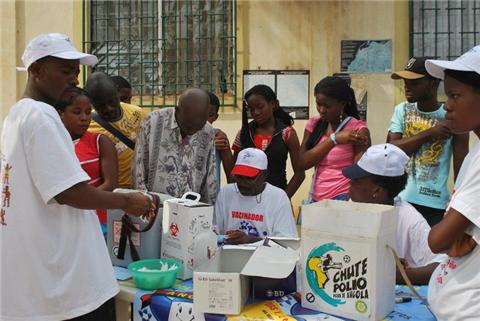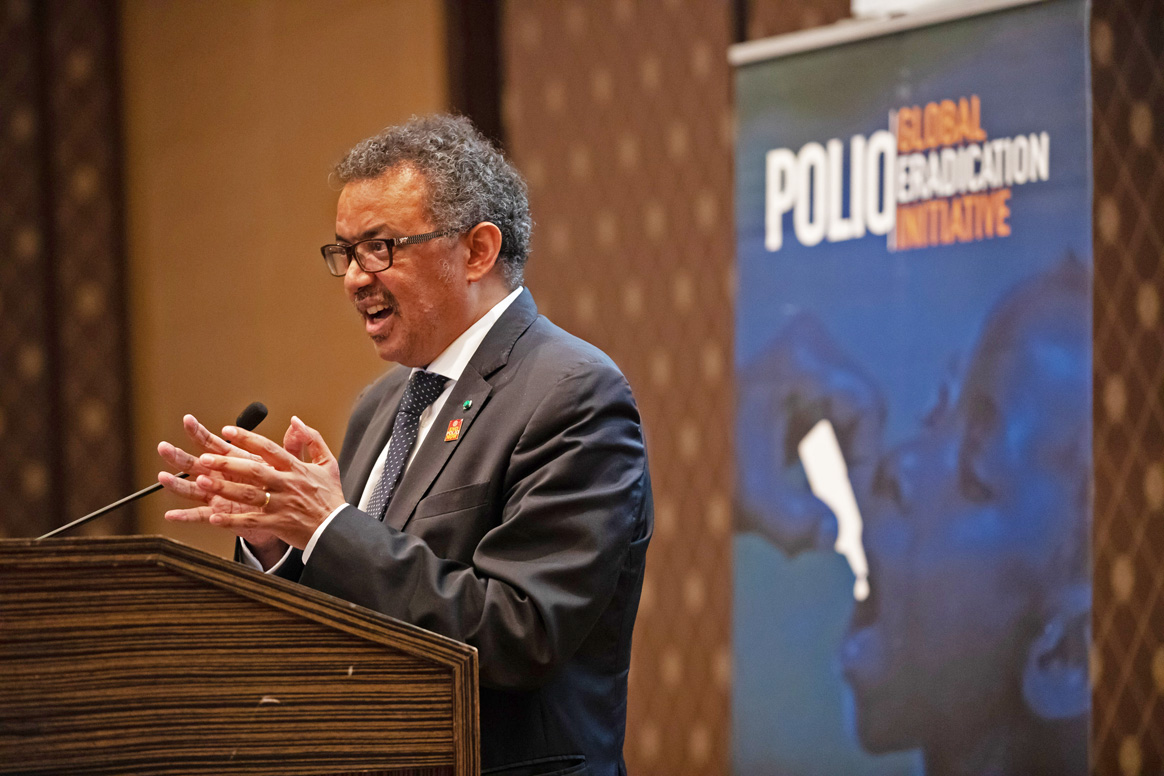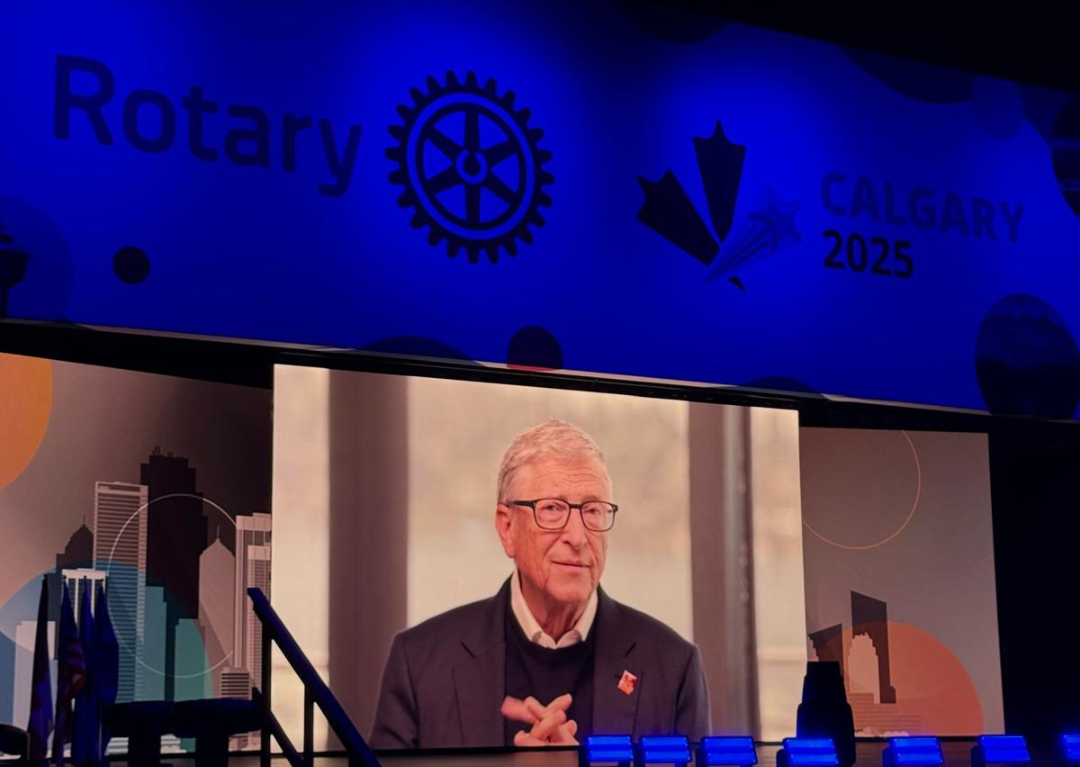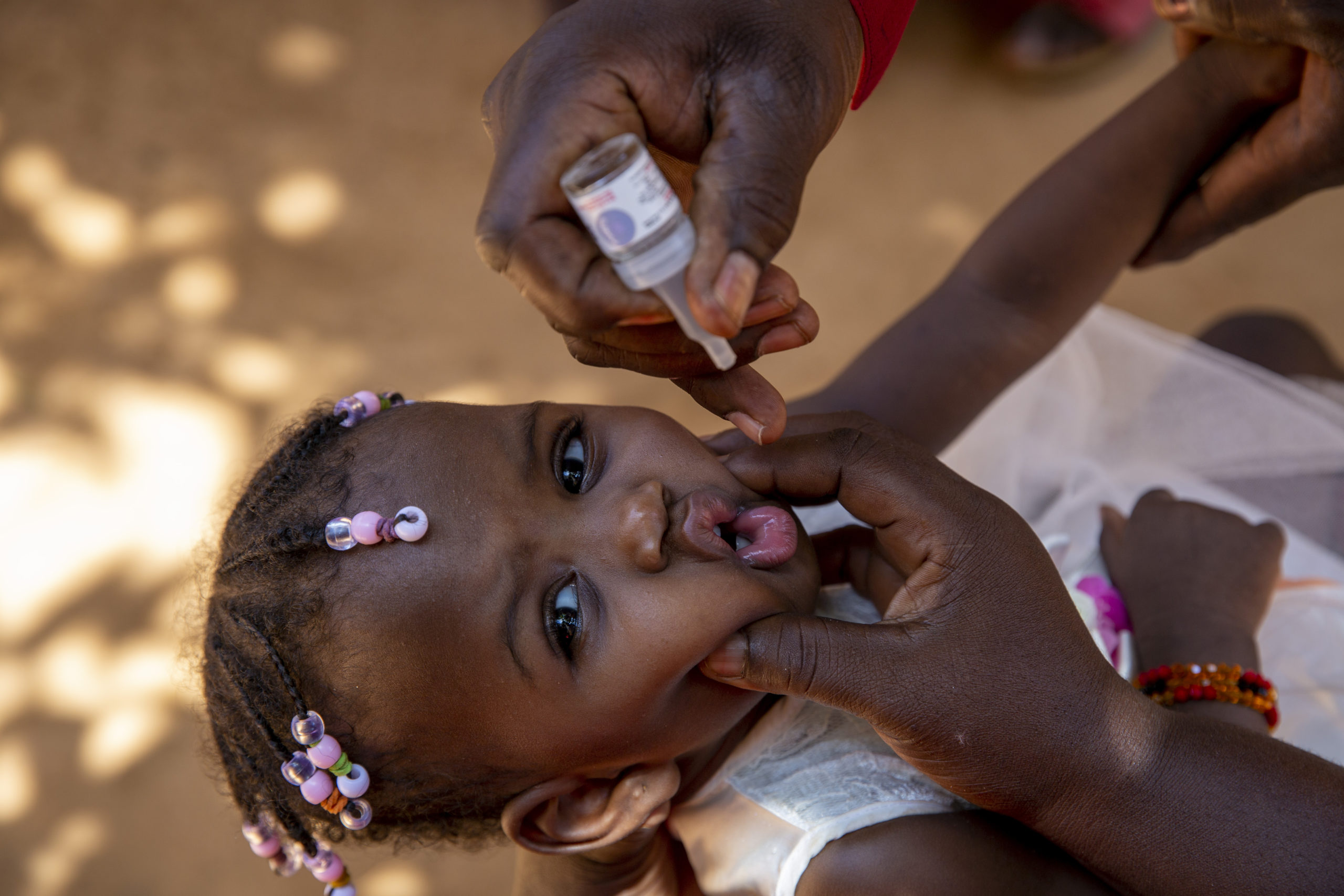
On 7 July 2012, Angola achieved a significant milestone – a year without a single case of polio. Its last case dates to 7 July 2011, from Uige province, and was a new importation from neighbouring Democratic Republic of the Congo (DR Congo). Angola’s last indigenous case due to its re-established transmission virus dates back to March 2011.
This fantastic achievement is the result of the dedication of the Angolan people and their government to reach children everywhere with oral polio vaccine (OPV). Provincial Governors and Local Administrators have been empowered to take charge of polio eradication within their communities – a strategy which has paid off handsomely, as improved vaccination coverage figures in rural areas show. Additionally, the Government of Angola funds nearly 90% of current operational costs for polio eradication, and strong commitment is evident at all levels, including by His Excellency President José Eduardo dos Santos, and the Honourable Minister of Health Dr José Vieira Dias Van-Dúnem.
However, this does not mean that the country can breathe a sigh of relief and let down its guard, as many children in the capital, Luanda, and the greater province surrounding it, continue to miss out on receiving OPV. In its most recent report from June 2012, the Independent Monitoring Board (IMB) in particular highlighted ongoing risk to Luanda, which it calls the ‘natural home for polio’ in the country and where ‘poor surveillance and unacceptable levels of missed children are putting Luanda at high risk’. Independent monitoring data indicates that upwards of 10% of children are missed during supplementary immunization activities (SIAs). Many areas are not always reached by the public health services in Luanda. In addition, most of the health workers are overburdened with other competing priorities at operational level.
And so, while in early 2011 Luanda was seeing independent vaccination campaign monitoring results with less than 10% of all children being missed, in more recent campaigns most municipalities have consistently reported well above this figure as having missed out. Several reasons for missed children were identified including the poor selection of vaccinators and supervisors, the inadequate training of vaccination teams, the insufficient supervision and the weak microplanning. In some municipalities of Luanda, a loss of committed leadership of local Administrators was also observed, in leading the all-out process of polio campaign preparation and supervision. As a result, a significant number of houses were not visited by the vaccination teams during the campaigns in Luanda province (‘house not visited’ accounted for above 50% of the reasons for missed children during the last three polio campaigns in Luanda, per independent monitoring data).
To counteract this, UNICEF and WHO are working with the International Committee of the Red Cross and faith-based groups to build support for the programme among local leaders including the churches. WHO staff represented in the 18 provinces, the STOP team and international consultants from the US Centers for Disease Control and Prevention (CDC) are also providing technical support to local authorities to help them prepare and carry out vaccination campaigns. With the financial contributions from the Angolan Government to WHO – US$ 5 million – to support the implementation of the polio emergency plan 2012-2013, WHO has recruited additional national health workers for Luanda province to ensure a more manageable workload. So, since April 2012, each of the 11 municipality of Luanda is now supported by a health technician with a vehicle and driver from WHO to conduct additional training to vaccination teams and their supervisors, to review the campaign microplans and provide intensive supervision during the implementation. The Angolan government with the support of the international agencies and the local partners is also committed to plan and implement mop-up campaigns in order to vaccinate the missed children identified through the post- campaign independent monitoring.
Ensuring that vaccination teams reach all the children of Luanda’s slums will be crucial if Angola is to remain polio-free and stave off a re-importation of the poliovirus. And as long as polio continues to circulate elsewhere – including in nearby Nigeria, Chad and neighbouring DR Congo – re-importation remains a very real possibility. Angola had originally defeated polio in 2001 but has suffered repeated re-importations since 2005. In order to avoid a repeat of past polio resurgences, the country will now have to work hard to ensure that all Angolan children, including those living in and around Luanda, and in the bordering districts of the country are protected against the disease.
This is the second part of our ongoing series on reaching the last child in the remaining polio ‘sanctuaries’. Read the first part of the series, looking at reaching the last children in Afghanistan, here.


